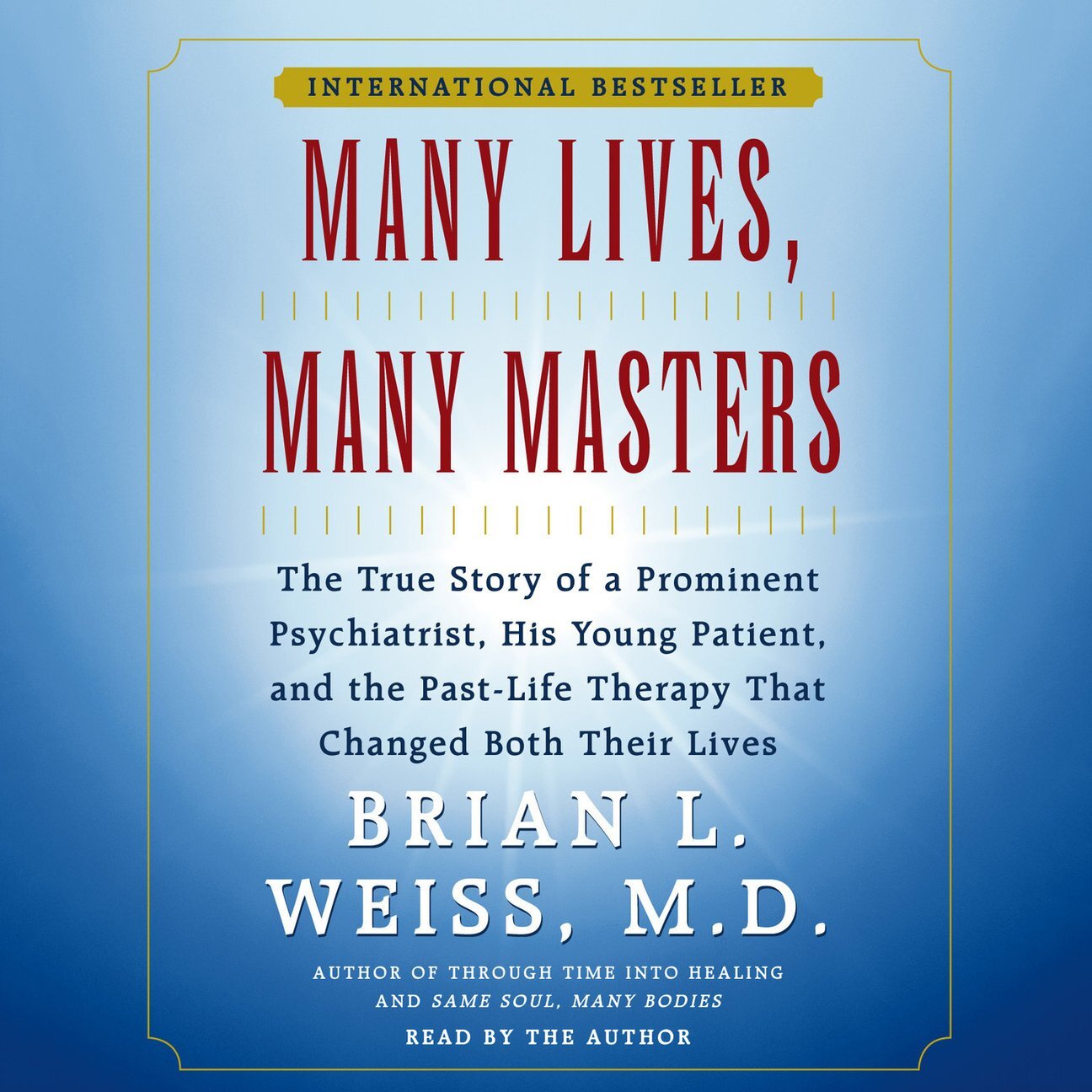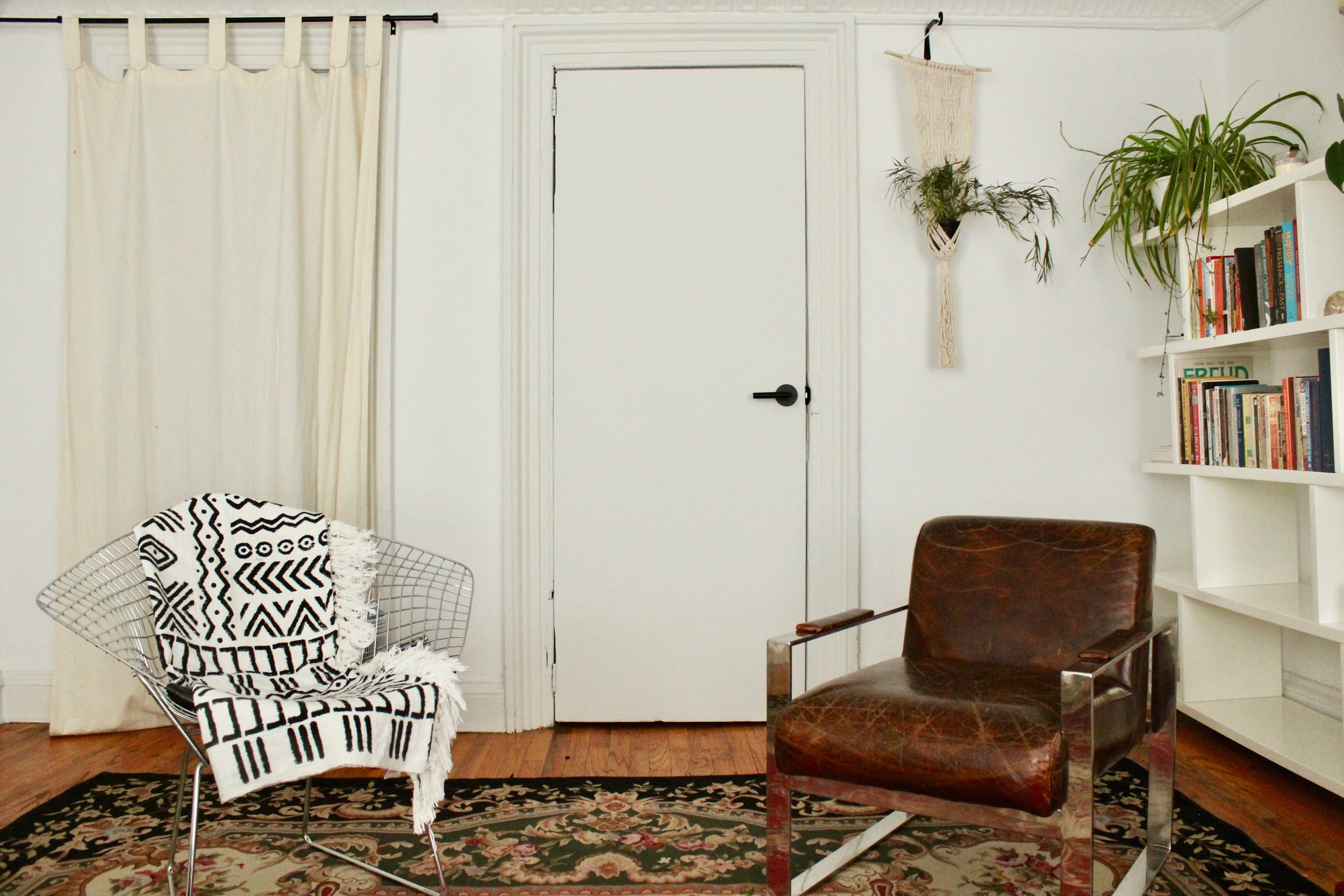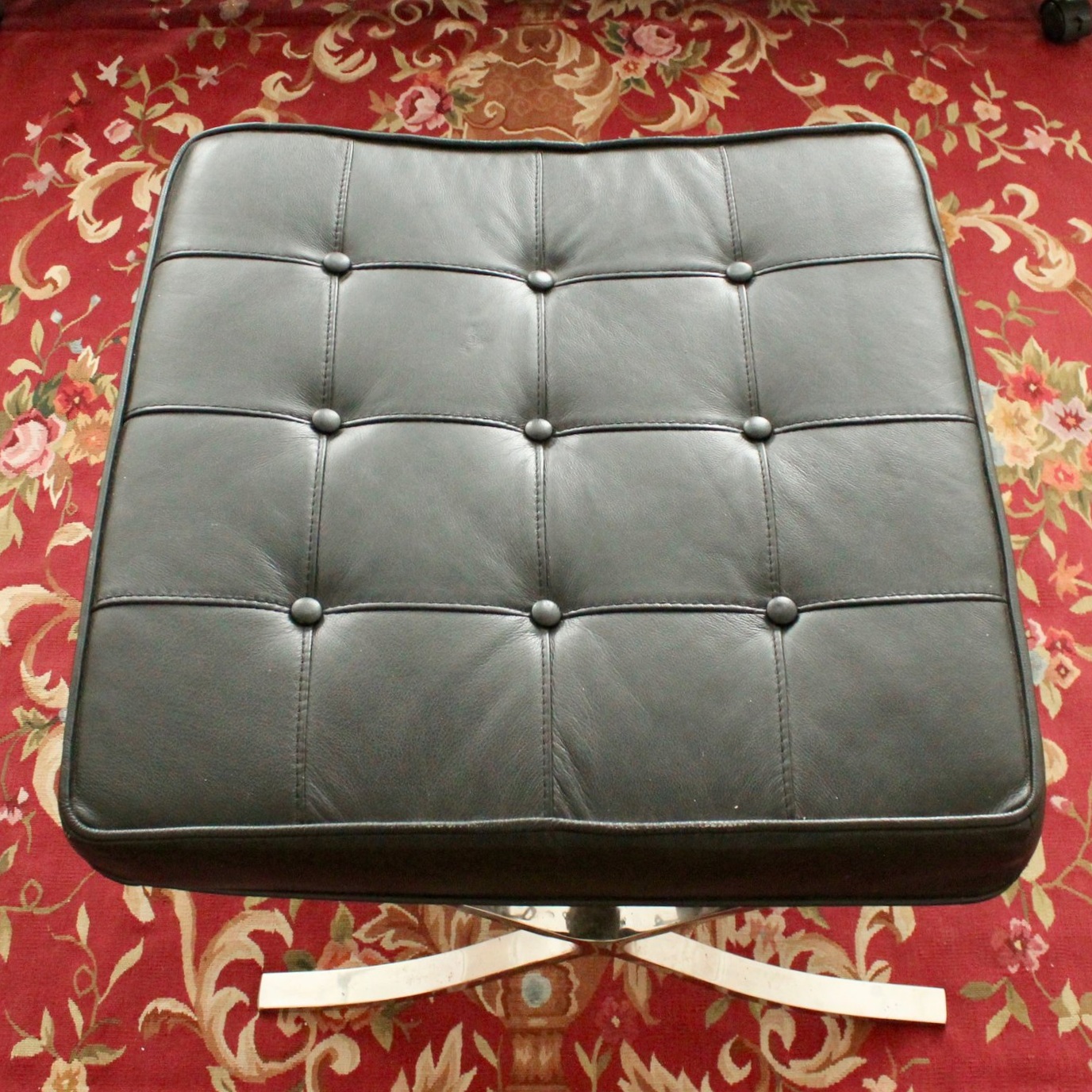By Sanam Yar, originally published March 4th, 2020
On a rainy Thursday afternoon, in a plush pink conference room in Manhattan, a group of colleagues formed a meditation circle. As they sat in their own silence, sirens and traffic wailed below. “Bathe in the joy of truly loving yourself,” a former Tibetan Buddhist monk advised them.
Over the course of an hour, the participants — co-workers at WayUp, a company that matches employers with recent college graduates and students — were guided through deep breaths, spoke to each other about “flow” and “powerful creative states,” and completed a self-hypnosis exercise.
They bonded over their challenges with sleep and overworking. At the end of the session, one employee mentioned his chest feeling less tight; another described a pinch in her back dissipating.
“That was awesome,” said Brandon Santulli, the office manager at WayUp. It was his first time meditating. “I feel very energized now,” he said, “and that’s not usually how I feel until I get another cup of cold brew.”
As companies have stressed the importance of work-life balance and mental health, and a younger, more open-minded work force has joined their ranks, wellness initiatives have ramped up in workplaces across the country.
These optional activities, often scheduled during company hours, include basic meditation and yoga, as well as vision-boarding (creating a collage, essentially), energy consulting, sound baths and hypnotherapy. They are meant to be restorative and instructive, without veering too didactic. And they’re not peculiar to millennial-led start-ups: Multinational corporations, restaurant owners and federal government agencies are among the employers calling for more wellness in the workplace.
“No one wants to sit down for an hour and be lectured about stress management,” said Cassandra Bianco, the founder of Wellbeings, a network of corporate wellness consultants who, in addition to leading the meditation workshop at WayUp, have performed cacao ceremonies for Spotify and hosted an intuitive eating course at the Wing. “They want to sit for an hour and feel de-stressed.”
The ultimate purpose is to encourage a corporate culture that takes a more holistic approach to employee well-being and embraces imperfection in the daily grind.
“I’ve seen firsthand what five deep belly breaths before a meeting can do,” Ms. Bianco said.
Vision-Boarding a World Without Burnout
Last spring, the World Health Organization officially recognized burnout as an “occupational phenomenon” caused by chronic workplace stress.
Roughly two-thirds of full-time workers experience burnout on the job, according to a 2018 Gallup study of nearly 7,500 employees. Another study, by Deloitte, found that nearly 70 percent of respondents thought their employers weren’t doing enough to prevent or reduce burnout within the workplace, with 21 percent of employees stating that their organization didn’t offer any programs to assist in minimizing burnout.
Some companies are approaching the problem from a wellness perspective, encouraging employees to free their minds of work from time to time, and to be more open about their challenges.
In January, Gympass, a corporate fitness platform, hosted a new year workshop at the company’s New York office (“Manifest Your 2020 Goals and Visions”) that paired a vision-boarding exercise with meditation.
Employees discussed their aspirations for the year — both professional and personal — then created visual aids reflecting their goals. One employee included her hopes of adopting a dog on her board. Some have since hung their vision boards up at their desks.
“With this kind of activity, you first look internally,” said Lívia de Bastos Martini, the chief human resources officer of Gympass. “You stop and think about yourself, which is something you don’t have time to do on a day-to-day basis, then you focus on somebody else, and the exchanges are much more meaningful.”
Sometimes wellness experts are called upon in moments of crisis.
Last fall, Jesse Israel, a meditation teacher who is currently on tour with Oprah and whose clients include Coca-Cola and Ford, was brought in by a “big retailer that recently went bankrupt,” he said, to lead a session during an annual companywide meeting.
“The employees were really freaked out about their future, there was a really heavy energy in the room and the company was really going through it,” Mr. Israel said. “I did a keynote talk about toxic stress and stress culture, and I led a meditation.”
During the session, he recalled, the owner of the company “got so deep in the meditation that the C.E.O. had to go over to him and shake him when the time was done because his body was so exhausted by what he was going through.”
Exhaustion, Mr. Israel said, is a common affliction among employees. “What I see more than anything is the pathway to burnout,” he said. “People know that they’re stressed and they don’t do anything about it.”
Mindfulness and stress management have been top of mind in the past few years for Sonya Luisi, the corporate wellness manager at Flik Hospitality Group, which provides food service and wellness programs for businesses.
Earlier in the winter, she introduced employees at a major pharmaceutical company’s campus in Gaithersburg, Md., to sound baths. “Before the class, people were like, ‘What is a sound bath, I don’t understand?’” Ms. Luisi said. “Since the new year, I’ve had a good handful of people ask me when the sound bath was coming back.”
Halcyon, a nonprofit that provides fellowships for early-stage entrepreneurs, started incorporating wellness into its programming after it became clear that its fellows were stressed, anxious and under severe pressure to perform.
It began with yoga and meditation, then expanded to sound baths and fitness classes, as well as “smash therapy,” where participants make a piñata and then destroy it. Halcyon also encourages the entrepreneurs to share their emotions in weekly breakfast discussions and on a large whiteboard near the building’s entrance.
“We want to be proactive and catch things, rather than dealing with burnout,” said Kate Goodall, the chief executive of Halcyon.
But the success of wellness practices also relies on both the willingness of employees and top leadership to integrate these values into their company culture.
Maryam Ajayi, who runs workshops that blend breath work, human resources principles and mindfulness techniques through her company Indagba, echoed that sentiment. “There’s people that don’t understand it and will not come anywhere near it,” she said. “But most people, especially with the epidemic of burnout, they’re like, ‘I’ll try anything. They are sick of being sick.”
Sonya Matejko and Brandon Santulli ask each other “beautiful questions” during a wellness workshop at WayUp.Credit...Andrew White for The New York Times
‘A Band-Aid Over a Gaping Wound’
A common criticism of workplace wellness programs is that they offer a superficial solution to more deeply rooted institutional problems, including a 24/7 work culture, unmanageable workloads and unpredictable schedules.
Most wellness programs have “limited if any effectiveness,” Jeffrey Pfeffer, a professor of organizational behavior at the Stanford Graduate School of Business, wrote in an email.
In virtually every aspect of life, including employee health and medical interventions, “prevention is almost always much more effective, and cost effective, than treatment,” he said.
According to Dr. Pfeffer, fundamentally redesigning jobs to improve upon employee health and performance would be a more useful practice in the long term. “Instead of stress reduction workshops or meditation, reduce stress,” he said. “Instead of nap pods, give people the opportunity to get enough sleep.”
On the other hand, wellness practices in a workplace setting may also be the only place where employees have access to them, said Monica Worline, a research scientist at the Center for Compassion and Altruism Research and Education at Stanford.
Dr. Worline, who is also the chief executive of EnlivenWork, a company aimed at improving workplaces through research-based tools developed by academics, said there is mixed evidence on the efficacy of workplace wellness programs. More recent research, according to her, tends to deal with “the teaching of mindfulness, meditation and other techniques that help people in work settings to calm down their minds and refocus their attention.”
Another trap many organizations fall into is believing that the introduction of a mindfulness program can make up for significant underinvestment or inattention to employees’ actual working conditions, Dr. Worline said.
She recalled visiting a “major hospital system” to help with a unit of doctors who were dealing with an increasing error rate in their work. After she ran a session for the team focused on compassion and “restoring meaning to medicine,” she discovered that the unit was short seven staffers and many employees were working double shifts.
“They very rightly said to me, ‘You could sit here and talk to us about compassion all day long, it’s not going to make a difference in our stress levels,’” Dr. Worline said. “No wellness management is going to work until you fix the working conditions for people there. In that case, wellness programs were a Band-Aid over a gaping wound.”
Still, Mr. Israel, the meditation expert, is confident that as stress levels in the workplace increase, so will the demand for this kind of programming. Last year, at a hospitality design conference in Hollywood, Fla., he presented in front of hundreds of people from the industry.
“Ninety-five percent of the people in the room had never meditated or done any of this before, and it was risky for the organizer to book me, but people loved it,” he said. “In these more traditional spaces where people are not in New York or Los Angeles, they’re starting to open up to this stuff.”
And through these sessions, some of them are finding practices they can replicate on a more regular basis. Mr. Santulli, the office manager at WayUp, said he would look into hosting a weekly mindfulness session for the whole staff.
“Stress and anxiety has been a big part of our life, and everything gets overwhelming sometimes,” he said. “This was the first time in a long time that I let go of this list of things I have to do, even for a moment.”
Sanam Yar writes about youth culture and social media. She is based in New York. @sanam_yar








































